|
**Disclosure Statement: I was not financially compensated for this post. I received a sample for review purposes. The opinions are completely my own based on my experience.** Today I am super excited to be bringing you a new review! For the past month or so, I have been putting a Wrapsody Breeze woven wrap through the paces. It has been the ONLY wrap I've used for the last 5 weeks, with my ever-growing 3 year old and my trusty demo-doll. And you know what, I love it! If I had a young baby and needed to pare down to only one wrap, this one would be a strong contender! The manufacturerI have been wearing my children in a variety of carriers for nearly 8 years, and paying close attention to the baby carrier industry and the community of hobbyist wearers for nearly that long. During this time, I've seen many changes in the industry, the community, and the market. There has been a huge growth in the number and variety of carrier manufacturers, with new makers debuting every year, and some manufacturers closing up shop. Some manufacturers have remained constant with a dash of well-planned innovation. Wrapsody is one such manufacturer. It was founded in 2004 and its story is incredible and interwoven (see what I did there?) with the stories of the babywearing community and industry. When companies approach me to do a review, I am choosy about who I say "yes" to. While doing a review may seem like fun (it is!), it is also a lot of work, and I want to be sure I am putting in that work for a company whose values align with my own. When Wrapsody asked if I was interested in writing a review, I was thrilled! Not only are they a long-time and well-respected manufacturer, they are well-known for their incredible mission that goes well beyond "just" making baby carriers. Wrapsody's core values integrate sustainability, evidence-based practice, collective responsibility and social justice, and supporting strong communities. I frequently refer to articles from their education section (the drop down menu from the "babywearing" tab on their website) and blog. The productWrapsody makes four different carriers (the Breeze, the Hybrid stretch wrap, the DuO water/sport wrap, and the Artisan ring sling) as well as wearable and functional clothing and accessories. They sent me their Breeze wrap, which is the original product upon which Wrapsody was founded. It is a woven wrap made of a gauze material. The words that come to mind when describing the Breeze are: lightweight, versatile, comfortable, and beautiful. Lightweight: The Breeze is made of a gauzey cotton. When you hold it up to the light, you can easily see through the material, as the threads are not woven closely together. This means that it is lightweight, packs down very small (in a handy built-in pocket on one of the tails of the wrap), and it is breathable, which makes for cooler wearing for both child and caregiver. For warm-weather wearing or for babies or caregivers who "run hot," this is an excellent carrier! Versatile: A woven wrap is the most versatile baby carrier, in that you can use it with any size baby or child, wrap the child on your front, hip, or back, and do a number of different types of carries that change how your body is bearing the child's weight as well as where the child is positioned. When my shoulders are achy, I can switch to a torso carry, and when I need to have the weight a little higher on my body and my child wants to see over my shoulder, I can do a rucksack carry. The Wrapsody Breeze can be used with children from newborn through 35 pounds. I used it to do a "babywearing challenge" to try out a number of different carries with my demo doll which is slightly larger than a newborn. I also used it with my 35 pound 3 year old. It is 24 inches wide, which makes it a great width for a newborn, infant, or small to average toddler, but I personally prefer a bit more width for my very tall and leggy child who prefers to snuggle deep in the wrap. (Wrapsody's Hybrid wrap is 30 inches wide which works a bit better for me). Comfortable: In wrap "technical terms" the Breeze was quite moldable (this is my top personal preference out of all wrap qualities) as it snugly conformed to my body and my wearee's body easily, and it had a nice amount of grip (but not too much!) as the fabric easily held a slipknot and various multi-layer carries did not slide out of place, but it also was fairly easy to slide passes into place. One of the things I was worried about with the Breeze was whether it would be diggy since it was so thin. It wasn't, at least for me, but I could understand how it might be for some. I did have to be sure to carefully tighten or pull out the slack from each pass in order for the fabric to lay comfortably, but as long as I did that, it wasn't diggy at all. I would argue that the Breeze (or the Wrapsody Hybrid) is a wonderful first or only wrap because it will help you develop precise wrapping technique! Beautiful: Wrapsody Breeze wraps are known for their lovely hand-dyed and batik colorways. According to the company they are manufactured in Bali, Indonesia by a small business owned by a single mother (another great reason to support this company!). Many of the designs have an organic feel to them, so they align with my aesthetic preferences. Some retailers who carry Wrapsody have exclusive colorways, and there are also some commemorative colorways honoring an organization or a specific person. There a variety of colors from bright to soft, muted to saturated, dark to light. There are not a lot of geometric or ultra-modern designs, so if that is more your style, Wrapsody might not be your cup of tea. One feature that I love is that many of the designs have different colors along each rail, or a gradation that spans the width of the wrap. This makes Wrapsody wraps (both the Breeze and the Hybrid) really excellent for learning to wrap. I love using them to teach new wrappers! (if you want to learn to use a carrier, you can find a babywearing group via this list compiled by Wrapsody, and if you'd like to start your own group to help other caregivers and babies, you can use this guide!) Things to know about Wrapsody wraps: There are a couple things that Wrapsody does differently from many other woven wrap companies, notably their sizing and instructions. Wrapsody offers three different sizes of Breeze wraps, ranging from 4.6 meters to 5.5 meters. This size range allows for most caregivers to have a Breeze in their "base" size (the size that lets you do Front Wrap Cross Carry without having too much leftover tail). Very petite or slim caregivers might find even the smallest size to be a bit long. Typically, you can use up a bit of extra length by doing a fancy finish or by adding some reinforcing passes around the baby or tied around your waist. It is possible to "chop" a Breeze to make a shorter wrap. I personally would use the extra length to add extra passes. Additionally, the instructions booklet may be a bit confusing, as it uses different names for carries and positions than the generally accepted names in the community. One example of this is Wrapsody's "Hip Pouch" carry, which is called "Robin's Hip Carry" in nearly every instructional YouTube video demonstrating this particular carry. (Wrapsody does have video instructions on its site for all of the carries in the instruction book). This may be fine for those who know different carries already, but confusing for those who are trying to look up videos. The bottom lineIn short, the Wrapsody Breeze is a wonderfully lightweight and versatile woven wrap that is excellent for newborns, infants, and average to shorter toddlers. It shines in carries that have cross passes, sling passes, and torso passes. It would not be my first choice for carries that involve ruck straps with heavy babies, and I did not love it with my very tall 3 year old.
It would be a wonderful first woven wrap for those who are committed to learn to wrap with care, or a nice addition to a carrier stash for those who are wanting something lightweight.. It is different from any other wrap I've tried (I've tried MANY), and I loved it! If you haven't tried a Breeze, this summer would be the ideal time to change that! Wrapsody would love to welcome you to their online family!
2 Comments
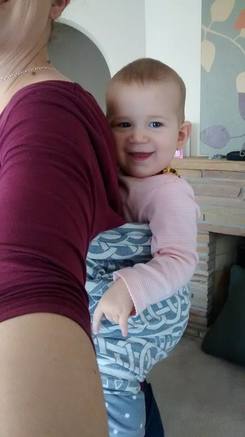 Back Torso Carry with an Oscha Japanese Knot Ooki Bodhi size 3 Back Torso Carry with an Oscha Japanese Knot Ooki Bodhi size 3 If you are interested in woven wraps and start to build even a small collection, you might find yourself wanting to branch out from your "base size" at some point. There are some great things about mid-length and short wraps: you can pack them down a bit smaller (less room in a bag) and you can do some interesting carries, without having to wrangle a whole lot of fabric. I especially love them for back carries for short walks with bigger babies and toddlers. snuggly front carries with newborns, and easily adjustable front or hip carries for breastfeeding. My favorite wrapping qualities in a shorty are generally: cushy (feels a bit soft on the shoulders), moderately grippy (so it holds a slipknot well), and moldable but with a bit of structure (it will conform easily to baby's body and mine, but still has some moderate heft - it isn't too floppy). I personally struggle a bit with a base-4, but my favorite short wrap length is a base-3. For me, this is a size 3. I love some of the carries I can do with it! it is helpful to know how to tie a slip knot for some of the carries, and if you have a set of SlingRings, you can use these to your advantage with short wraps! There are many carries you can do with a base-3 and my favorites are (click on each link for a video tutorial of the carry): Front Reinforced Torso Sling, Semi Front Wrap Cross Carry, Traditional Sling Carry, Poppins Hip Carry, Half Jordan's Back Carry, Back Torso Carry, Shepherd's Back Carry, Short Back Cross Carry, and Ruck Tied at Shoulder. For more reading about short wraps, check out these great posts from Amy Wraps Babies! 9 Short Wrap Front Carries 17 Short Wrap Back Carries Disclosure statement: I received no compensation of any type for completing this review. People. Gather round. Are you interested in learning about a soft-structured carrier that combines wonderful quality with amazing value? Of course you are! Listen up. 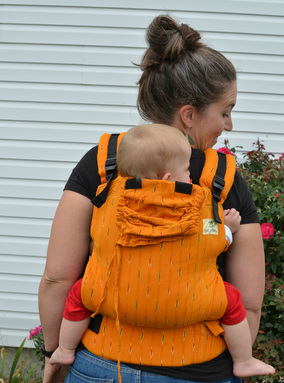 Back carry with a petite 18 month old Back carry with a petite 18 month old Easy Feel Products is a company based in Gurgaon, India, that is new to making carriers, but has been in the baby products industry for about two years now, with cloth diapers. They have entered the carrier market with a lineup of soft structured carriers in both standard and toddler sizes, as well as ring slings. Easy Feel sent me a Standard size Full Buckle Ergonomic Wrap Converted Soft Structured Carrier to review. First Impressions Upon opening the package, I was struck by the high quality of the materials as well as the simple-to-use construction. In many carriers that are marketed as "affordable," I am disappointed by lower-quality materials. This is definitely not the case with Easy Feel! The waistband, shoulder strap, and legs out padding is thick, and the handwoven Ikat wrap fabric that covers the entire carrier is soft, vibrant, and beautiful. I was so pleased to discover that this "budget" carrier is a full wrap conversion! The function of the carrier is very simple as well, with a few thoughtful and useful convenience features. It allows for two wearing positions: on front or on back, facing in toward the wearer's body, and the shoulder straps adjust in one direction. For the average consumer, this simplicity makes the Easy Feel an easy-to-use carrier to use from about 4-6 months on up! The wonderful features of the Easy Feel are worth exploring in more detail. Let's review the safety, comfort and function, materials, and value. Safety Easy Feel puts safety first. The soft structured carriers have passed testing and are certified compliant with ASTM F2236-14 safety standards, and there are some identifiable extra safety features that are standard on these carriers. The clip on the waist belt has an extra elastic band around it to help prevent falls should it become unfastened unexpectedly. All weight-bearing seams and sections of the carrier are reinforced with multiple lines of stitching, as well as "X-box" stitching to hold pieces securely in place. 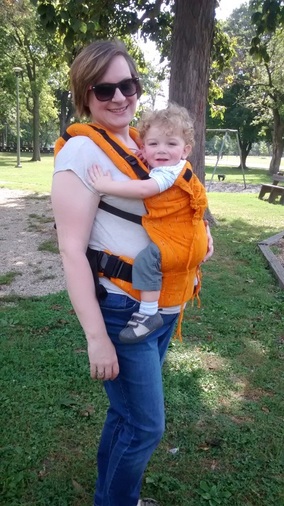 Easy Feel was a hit with everyone who tried it! Easy Feel was a hit with everyone who tried it! Comfort and Function For me, these traits go hand in hand. I tried this carrier with my very tall 2.5 year old in a front carry around the house, a petite 15 month old in a back carry for a 2 mile walk, and a petite 18 month old in both a front and back carry, and was quite pleased with its performance on all accounts. Remember that buckle carriers are kind of like jeans, meaning that each person has a favorite buckle carrier, because they all fit a bit differently. For more on that topic, see this post. The padding in the waist belt and shoulder straps is thick, more so than just about any other soft structured carrier I've tried (and I've tried many)! The curved shoulder straps were one of my favorite parts about the Easy Feel. They were incredibly comfortable in both a back or front carry, The word "marshmallow" comes to mind, for that is how puffy and springy they were! The density and thickness of the foam waist belt were very comfortable for me as well. One problem with some SSC waist belts is that they can "buckle" over time, meaning the baby's weight causes the top of the belt to fold a bit. I feel very confident that this will not be an issue with Easy Feel due to the density and thickness of the foam. The high structure of this waist belt also allowed me to wear the carrier a little higher in a back carry, which was a comfort factor for me. I have a previous back injury and continuing hip pain which renders many SSC's that sit at the top of the hips quite uncomfortable for me. This was not a problem for me with Easy Feel! The adjustability of the Easy Feel allows it to fit people of many different body sizes and shapes. The shoulder straps expand from about 20 inches to about 39 inches, and the waist belt expands from about 25.5 inches to about 51 inches. There were a few other important features that impacted comfort for me and my wearees. The panel had darts that were carefully designed to allow for a nice seat - not too deep, and not too shallow. I was pleased to find that the Easy Feel has Perfect (or Personal) Fit Adjuster Straps that allow the the shoulder straps to shorten for petite wearers, or bring smaller babies in a bit closer for a more comfortable ride for all. There is puffy "legs out" padding that was marshmallowy (there's that word again!) under my wearee's knees, but still compressed down so as to not affect baby's leg positioning or freedom of movement. The padded section of the shoulder strap extends quite far which helped me avoid the dreaded "underarm rub" problem that can make some SSC's less comfortable. The long Perfect Fit Adjuster Straps still allows the strap to shorten enough to compensate for any anticipated "too-big" fit problems with long padded section. 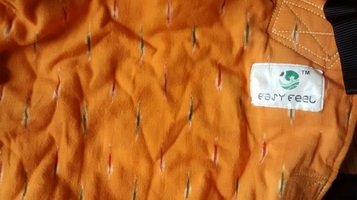 Easy Feel's Ikat cotton cloth is soft and vibrantly dyed Easy Feel's Ikat cotton cloth is soft and vibrantly dyed Function Easy Feel carriers have some key design features that are typical for many higher quality soft structured carriers. The webbing on the shoulder straps is adjustable in one direction (pulling towards the back when the carrier is worn in a front carry), and the straps are "fixed" on sliders that do not detach. The chest clip slides up and down to allow for maximum adjustability for a variety of wearer body types. There are elastics on the ends of all webbing that allowed me to roll extra webbing up and out of the way to keep it tidy. And there are a few nice convenience features, including a small internal pouch inside the panel that allows a fixed hood to be tucked away, and a small pocket on the waistband, located at the hip which means it is accessible in a front or back carry. This pocket is large enough to stash an ID card and some cash, but was not large enough for a phone or diaper. Materials and Labor The owner of Easy Feel, Shikha Nitansh Garg, told me that the handwoven wrap conversion carriers are made from cotton sourced in India and woven by South Indian weavers. There is a team of four tailors and her mother has designed the carriers. She reports that Easy Feel follows Fair Labor practices. This particular carrier is made with Ikat fabric which was dyed using a resistive dyeing technique. It is advisable to wash this carrier before using it as it may have about 5-10% color bleed in the initial washes. Easy Feel offers carriers made from both vibrantly colored cotton prints and handwoven material. The carrier I had in hand was a full wrap conversion, meaning that the soft and beautiful Ikat fabric covers the entire carrier - panel, waistband, and shoulder straps. Value One of the things that Easy Feel prides itself on is offering a high quality carrier at a value price. Depending on currency exchanges, retail on the Easy Feel website runs at around $71 (US) for a cotton print standard size, $83 (US) for a cotton print toddler size, $75 (US) for a full conversion handwoven Ikat standard size, and $87 (US) for a full conversion handwoven Ikat standard size. Shipping to the United States is around $22 (US) for standard (non-expedited) shipping. While every consumer may determine what his or her budget for a carrier might be, the pricing of Easy Feel is extraordinarily competitive, and they have not sacrificed quality in their endeavor to make this carrier accessible! In summary, the Easy Feel soft structured carrier is definitely worth checking out if you are in the market for an affordable, high quality, and beautiful soft structured carrier from a family-owned business with fair labor practices. One of the many reasons people seek babywearing help is because they are unable to get their carrier comfortably adjusted. Babywearing should not be painful or uncomfortable for anyone! There is a carrier option (style, position, etc) that should work for you, but it may take a little "tweaking" to get things just right. Many people assume that means changing something about the carrier, but it can also mean changing our posture, or even a combination of the two.
To help us learn more about babywearing and posture, I interviewed Dr. Dara Lynne DaCunha.Dr. DaCunha is a chiropractor, doula, professional babywearing educator, and a mother of two. Her practice in Scottsdale, Arizona focuses on pregnancy, postpartum, and infant care. Dr. Dara is known for her treatment protocols with infants and feeding issues through chiropractic care and various forms of body work. Her experience as a personal trainer and yoga instructor support the priority she places on rehabilitating the postpartum body. Q: What is the main consideration about posture when wearing? A: The main thing to consider is your posture! Most caregivers are focused in on child and dismiss their own body, only to pay the price later on. Q: How does posture affect comfort while wearing? A: Well, at first, the majority of wearers won’t even notice they are uncomfortable. Discomfort from suboptimal posture is gradual and varies widely from person to person. Even without wearing a child suboptimal posture can be uncomfortable. Posture is the framework to movement. Q: What are some ways you see people change posture (and therefore are uncomfortable) when they put baby in a carrier? A: Some of the most common ones are rounded shoulders, rounded upper back, forward head posture, and hips pushed forward or to the side. Q: Are there certain carrier types or certain carries (in a wrap) that can be helpful for certain posture problems? A: Yes of course there are! I do believe that (physically) there is a carrier that can fit every caregiver, you just have to find it. A way to narrow down the search for a perfect carry is to think of counter-weight. For instance, if you have a upper torso that rounds forward, than a carry that pulls you upright might be more comfortable and even help correct posture. The carrier type will vary for everyone. Experimenting with different carries is the best way to discover what works for you. Q: What exercises can we use to improve our posture for wearing? A: There are many exercises that can help. One general stretch would be to lay on our backs, flat on the floor. We often don’t spend any time laying flat. We are hunched over a child or bending over our desk, sitting at a computer, staring at our phones, driving. All of these things round our shoulders forward and cause us to slump. Time flat our our back, letting our body relax into the ground. Q: What are some common adaptations or position tweaking suggestions? A: When you stand up straight and look at yourself in a mirror, from the side, your head, shoulder, ribcage, hip, knee, and ankles should all be in one line. Adjust your posture by looking in a mirror, after you have put the carrier on. This will give the wearer an idea of what it feels like to be in optimal posture and eventually it will be a subconscious movement. When you first adjust your posture you may have to adjust the carrier. The pressure points, shoulder height, hip stance will all change and therefore the carrier will fit differently. Slight adjustments are necessary at this point. Some people find, at this point, the new adjustments to the carrier remind them to keep the optimal posture. Q: Are there any circumstances in which you advise avoiding wearing for a period of time? A: There are definitely circumstances in which you should avoid wearing a child. Some cases that could fall into this category are surgeries, acute trauma (physical or psychological), and recommendation by your physician. If you are currently under the care of a physician, please consult them before babywearing. Many thanks to Dr. Dara Lynne for sharing her expertise. Being in tune with our bodies is important to reduce the chance of injury and strain while babywearing! If you have ever asked for information about babywearing on an internet group dedicated specifically to babywearing, you have probably heard the advice: "Go to a babywearing group meeting!" It is a really common response when people ask for help. In fact, I've given that advice here! A group meeting is a great (free!) resource where you can learn about ideal positioning and different types of carriers, try on carriers to see what you (and your baby) like, get help with troubleshooting, and learn new skills, like feeding in a carrier, back carries, and more. Plus, if you like meeting new people and want to meet other families with babies, groups can be a great place to do that! That sounds scary! If you're like me, maybe you are a bit cautious about going to new places and meeting new people. Maybe you have a really busy schedule or will have to make some significant sacrifices (time off work, gas money or finding a ride, especially to a meeting that may be very far away) to be able to attend this thing that everyone says is so great. Maybe you have a child who is stressed by busy, noisy places. Maybe you are struggling with your mental health as a new parent, and while you've heard babywearing might help you cope with postpartum depression, you have no idea where to start, and this group thing seems like too much. I like to make an informed decision about whether I'll go to something new, by learning about what to expect. Understanding what will happen is how I decide whether it will be worth my time, whether I'll feel overwhelmed or uncomfortable, and whether my children will be able to cope well with the environment. If you're like me and like to "know before you go," this post is for you! The "secret handshake" Just kidding. There's no secret handshake! But there is a secret code - the jargon and specific phrases that are often used at meetings can seem like a whole new (and very confusing!) language. Most of the time, people who are providing instruction or help will explain these terms when they use them, but sometimes you might need to ask for them to repeat or clarify. Don't be shy about this! In general, the people who volunteer at meetings are friendly and really want to share the babywearing love, and they are used to answering all kinds of questions. Groups are different! Babywearing groups are not all the same. There are groups that are affiliated with Babywearing International, and groups that are "independent" (or, unaffiliated). There are enormous groups (seriously, 100+ people at a meeting!) and tiny groups (just a few people getting together at someone's house). There are groups with lots of structure (introductions, lecture topics, instruction, try on and practice, carrier check out), and groups with minimal structure (just drop in sometime during the scheduled meeting time, and get the help you need). There are groups with many meetings all over town every month, and groups that meet in the same place, same time every month. There are groups with large lending libraries of carriers that can be checked out by meeting attendees, and there are groups that have a small demonstration library of carriers you can learn with or try on at a meeting but cannot take home. Some groups have a clear leadership structure where only leaders can provide instruction, and in other groups, all attendees may help each other with carriers. There are some groups that are affiliated with other special interest groups, like breastfeeding, attachment parenting, and more. But also they are kind of the same Things that almost all groups have in common: the main focus of a meeting is babywearing, and you are encouraged to bring your baby, if you have one! Most groups have a Facebook group or page, and some also have websites, blogs, Instagram, Twitter, and good old e-mail. Try to contact them via one of these formats, and ask questions before you go, to understand what type of group it is! What to expect For groups that have some type of structure, the following agenda is fairly typical:
The fine print Other than the meeting agenda, here's a few other details you should know:
Some thoughts on accessibility OK, time to get really serious here for a minute. While babywearing groups are a fantastic community service in many regards, it would be irresponsible of me to not provide some thoughts regarding inclusivity and accessibility. Groups tend to overwhelmingly have members who are white, straight, female, and have some financial privilege. If you are a person of color or gay, you should be prepared that you may be the only one there. If there are only a couple of meetings in a month, they tend to be during the day, making them inaccessible for families who work during the day. They tend to take place at locations in wealthier or suburban areas, making them inaccessible or at the very least intimidating for families in lower-income area or who do not have transportation. This is often because the meeting times and locations are determined by the people who have the time, energy, and privilege to be volunteer leaders. If they are stay-at-home parents, they tend to choose meeting times that work best for their families' schedules. Carriers that retail between $100-150 are frequently recommended when families who are new to wearing ask for recommendations, making babywearing seem inaccessible to families who are on a budget. (Spoiler alert: it's not.) While these problems are not universal (remember there are all types of groups, in all types of communities?), they are quite common and worth mentioning specifically. There are some groups who are actively working to make changes to increase accessibility and inclusivity, but overall most groups have a long way to go. Go! And give back! If you have the means and availability to attend a group meeting, it can be a great way to learn more about using carriers and a great place to meet other families. Once you've learned what it is that you came to learn, keep attending if you can, and contribute to an environment of support for other new wearers! ! If you are able, consider volunteering your time to help out at meetings. Many groups are in need of volunteers who can sustain and even expand this great community resource, and many will be happy to find a way for you to help! To see if there is a babywearing group near you, check these links: https://wrapsodybaby.com/babywearing-resources/find-a-babywearing-group-near-you/ https://wrapyourbaby.com/babywearing-groups/ http://paxbaby.com/groups/ |
AuthorBeth. The babywearing lady. Archives
May 2017
Categories
All
all content
copyright 2016 Beth Secrist All photos used under the Creative Commons license through Flickr. Photography by: littletuesday12 |
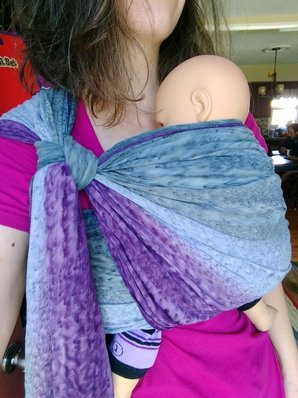

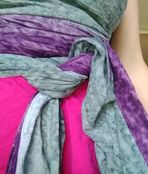
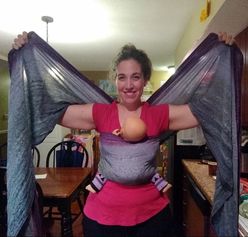

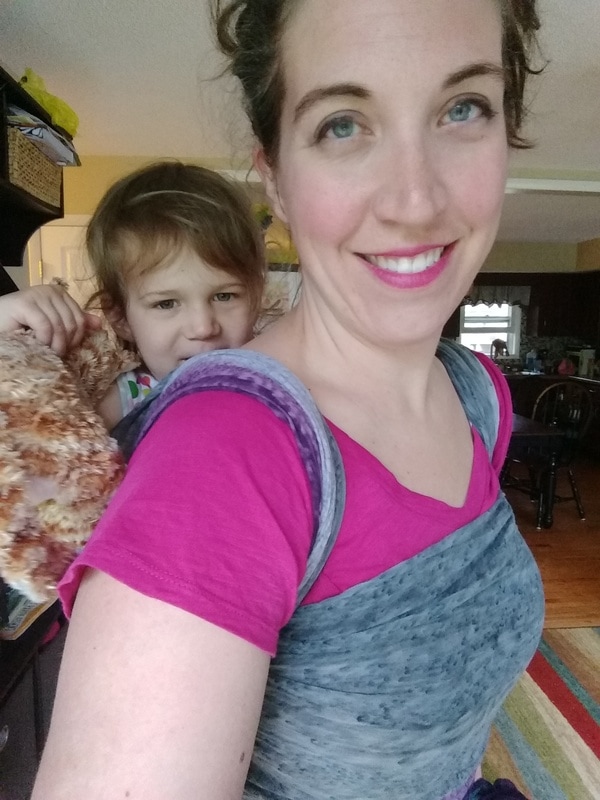
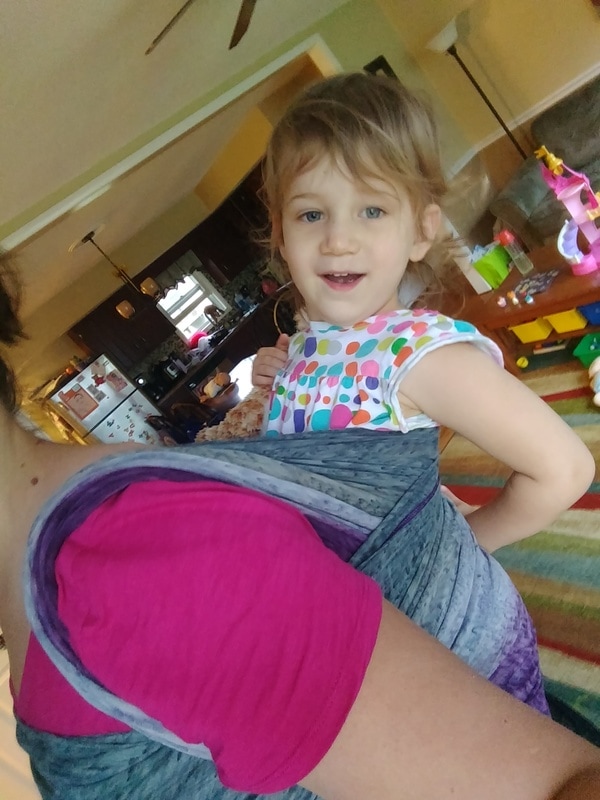

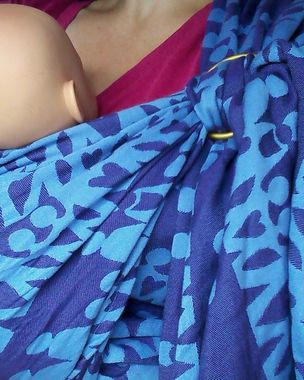
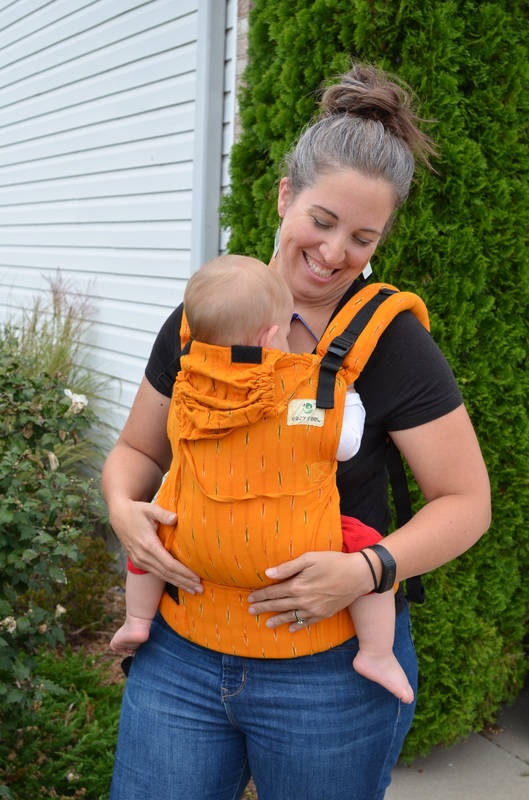
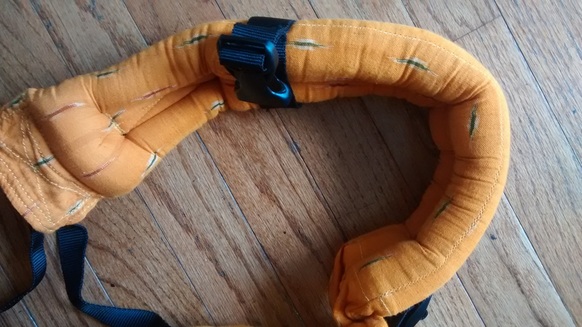
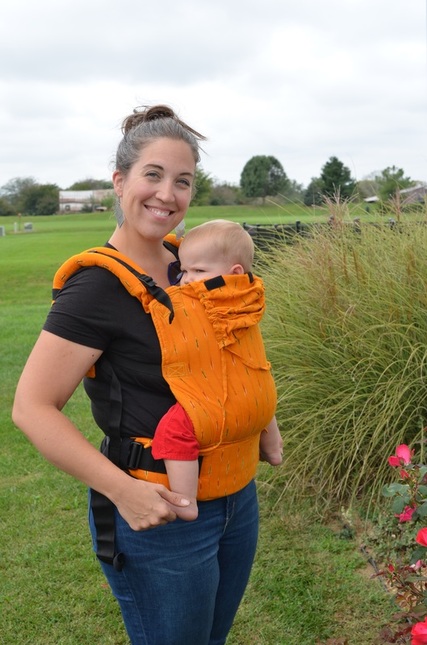

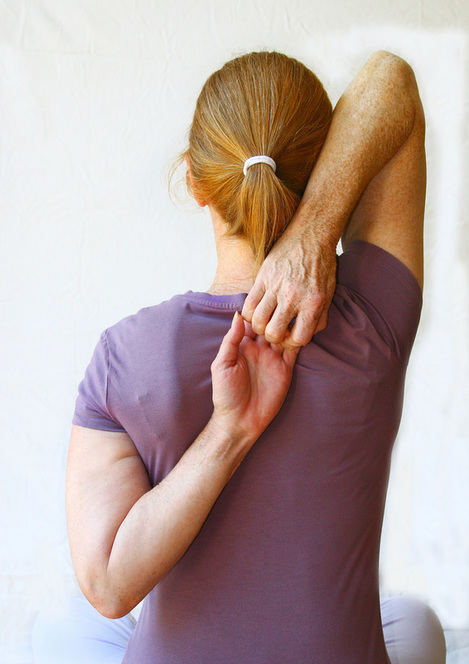
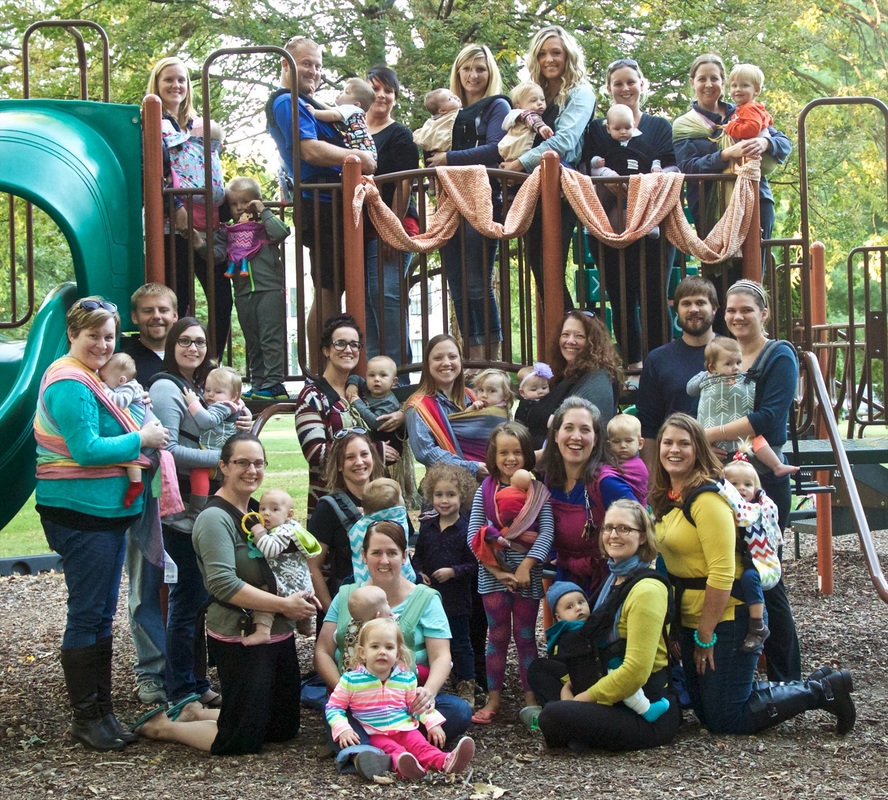
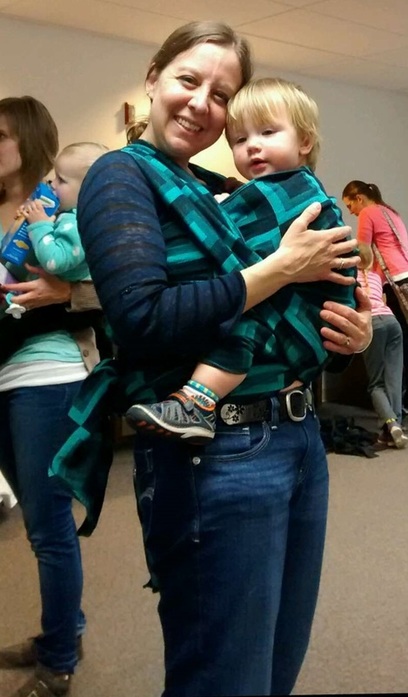
 RSS Feed
RSS Feed